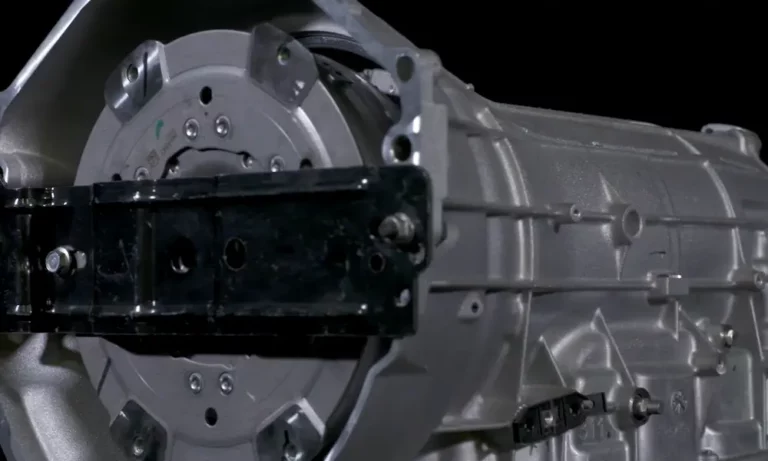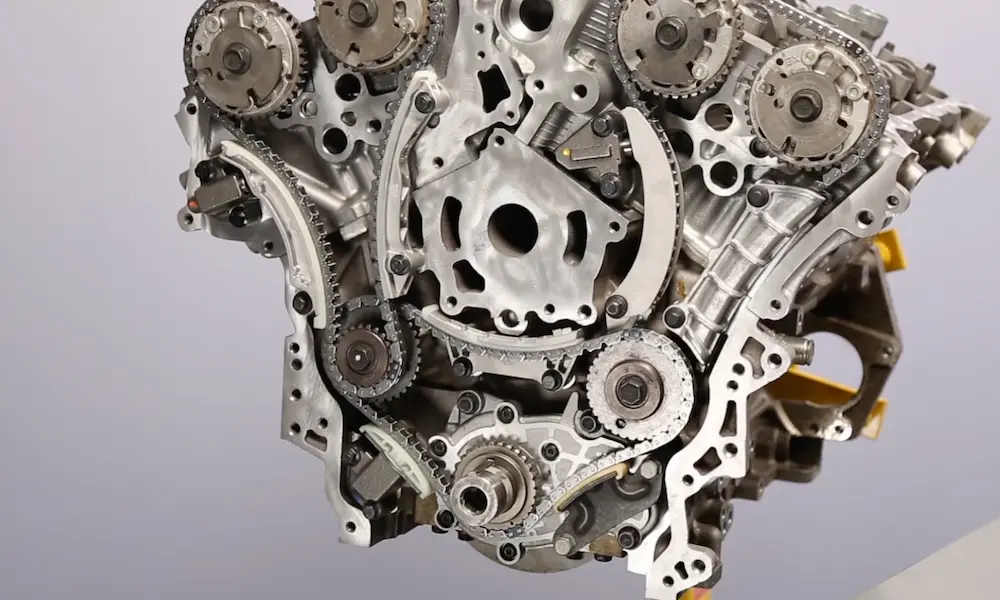Are you having trouble with your GM vehicle’s 8-speed transmission? You’re not alone. Many drivers have reported issues like shuddering and harsh shifts with these transmissions.
A simple fluid change might fix your transmission problems. GM has found that using a new type of transmission fluid can improve shifting quality in many cases.
Keep reading to learn more about the common issues, potential fixes, and what GM is doing to address these problems. You’ll find helpful tips to get your car running smoothly again.
Overview of GM 8-Speed Transmission
GM’s 8-speed automatic transmission was designed to boost fuel efficiency and performance in many of their vehicles. You might find this transmission in popular models like the Chevy Silverado and GMC Sierra.
When it works well, the 8-speed can give you smooth shifts and better gas mileage. It’s meant to handle a wide range of driving conditions, from city traffic to highway cruising.
But some drivers have run into issues. Rough downshifts at slow speeds have been reported in some trucks. This can feel like a bump or jolt when you’re slowing down.
Another problem some folks have noticed is a shudder in the torque converter clutch. It might feel like you’re driving over a rumble strip when you’re not.
GM has tried to fix these issues. They’ve updated the transmission fluid and made some mechanical changes. In some cases, replacing the valve body has helped solve problems.
If you’re having trouble with your 8-speed, don’t worry too much. Sometimes a simple fluid change can make a big difference. Your dealer should be able to help if you’re experiencing any of these issues.
Common Issues with GM 8-Speed Transmissions
GM’s 8-speed transmissions have faced several problems that affect vehicle performance and driver comfort. These issues can be frustrating and potentially costly if not addressed promptly.
Transmission Shudder
You might feel a vibration or shaking sensation, especially when driving at highway speeds. This transmission shudder often occurs around 1200 RPM or 50 mph. It can make your ride uncomfortable and may worsen over time.
The shudder is usually most noticeable when:
- Maintaining a steady speed
- Accelerating gently
- Going uphill
Many drivers describe it as feeling like driving over rumble strips. This issue affects various GM models with 8-speed transmissions, including Silverados, Sierras, and full-size SUVs.
A transmission fluid flush with new fluid can sometimes fix the problem. But it doesn’t always work for everyone.
Harsh Shifts or Jerking
Your vehicle might experience harsh shifts, especially between first and second gears. This can feel like a sudden jolt or lurch when the transmission changes gears.
You might notice:
- Abrupt gear changes when accelerating
- Rough downshifts when slowing down
- A clunking sound during shifts
These harsh shifts can make your drive less smooth and comfortable. They might also cause wear on transmission components over time.
The problem often seems worse when the engine is cold or when you’re driving at low speeds in stop-and-go traffic.
Delayed Gear Engagement
You may experience a delay when shifting from park to drive or reverse. This hesitation can be concerning, especially in situations where you need to move quickly.
Signs of delayed gear engagement include:
- A pause before the car moves after shifting
- Revving engine without movement
- Sudden engagement after a delay
This issue can be dangerous in certain situations, like pulling into traffic. It might also cause extra wear on transmission parts.
The problem can vary in severity. Some drivers report only occasional delays, while others face it regularly.
Fluid Leaks
Transmission fluid leaks can lead to various problems with your 8-speed GM transmission. You might notice red or brown fluid spots under your vehicle after it’s been parked.
Common signs of a transmission fluid leak:
- Low fluid levels
- Burning smell
- Slipping gears
- Overheating transmission
Leaks can occur from various points, including seals, gaskets, or cooler lines. If not addressed, low fluid levels can cause serious damage to your transmission.
Regular checks of your transmission fluid level and condition can help catch leaks early.
Torque Converter Problems
Issues with the torque converter can cause several symptoms in GM 8-speed transmissions. The torque converter is crucial for transferring power from the engine to the transmission.
You might experience:
- Shuddering or vibration at low speeds
- Loss of power during acceleration
- Overheating transmission
- Unusual noises like whining or humming
Torque converter problems can sometimes be mistaken for transmission shudder. However, they often occur at different speeds and under different conditions.
If you suspect torque converter issues, it’s important to have your vehicle checked by a qualified mechanic. Ignoring the problem could lead to more extensive transmission damage.
Technical Aspects of Transmission Malfunction
GM’s 8-speed transmission has faced several technical issues. These problems stem from various components within the transmission system, affecting its performance and reliability.
Solenoid Failure
Solenoids play a key role in controlling fluid flow and gear shifts. When they fail, you might notice jerky shifts or a delay in gear engagement. Signs of solenoid failure include:
- Erratic shifting patterns
- Transmission slipping
- Check engine light activation
Faulty solenoids can cause the transmission to enter “limp mode” as a safety measure. This limits your vehicle’s speed and performance to prevent further damage.
To fix solenoid issues, you may need to replace individual solenoids or the entire solenoid pack. Regular transmission fluid changes can help prevent solenoid failure.
Valve Body Failures
The valve body is the control center of your transmission. It directs fluid to different parts, enabling smooth gear changes. Valve body problems can cause harsh shifts and shuddering.
Common valve body issues include:
- Worn valve bores
- Sticky valves
- Debris buildup
These problems can lead to incorrect fluid pressure and timing, resulting in poor transmission performance. You might feel lurching or hesitation during gear changes.
Fixing valve body failures often requires replacing the entire unit. In some cases, a transmission fluid flush and filter change can resolve minor issues.
Wear and Tear on Internal Components
Over time, internal transmission parts wear down. This natural process can lead to various problems in GM’s 8-speed transmission.
Key components affected by wear include:
- Clutch packs
- Planetary gears
- Bearings
As these parts wear, you might notice increased noise, vibration, or slipping. Worn components can cause metal shavings to contaminate the transmission fluid, leading to further damage.
Regular maintenance, including fluid and filter changes, can help slow down wear. However, severe cases may require rebuilding or replacing the transmission.
GM 8-Speed Transmission Recalls and Service Bulletins
GM has issued several service bulletins for their 8-speed transmissions. These bulletins aim to fix issues like shuddering and shifting problems.
One important bulletin addresses torque converter clutch shudder in 8L45 and 8L90 transmissions. This can feel like driving over rumble strips at steady speeds.
You might notice this shudder between 25 and 80 mph. It can happen in both Drive and manual mode.
GM recommends draining and refilling the transmission with new fluid. They also suggest replacing the filter in some cases.
For certain 2021 Chevrolet Silverado and GMC Sierra trucks, there’s a bulletin about broken reaction carriers in 8-speed transmissions.
If you have shifting issues, your mechanic might need to do a “learn” procedure. This involves driving at specific speeds to help the transmission adjust.
Remember, these bulletins help dealerships fix common problems. If you’re having transmission trouble, ask your dealer about these service updates.
Repair and Replacement Options
GM 8-speed transmissions have several repair and replacement options. You can choose between in-shop repairs, full replacements, or aftermarket modifications depending on your needs and budget.
In-Shop Repair
If your GM 8-speed transmission is having issues, an in-shop repair might be the first step. Many problems can be fixed without replacing the whole unit. Transmission fluid changes often solve shuddering problems in these transmissions.
You may need to replace worn parts like clutches or solenoids. These repairs can save you money compared to a full replacement.
Ask your mechanic to check for software updates too. GM has released new programming to improve shifting in some cases.
Keep in mind that repair costs can vary. Get quotes from different shops before deciding.
Full Transmission Replacement
Sometimes, a full transmission replacement is necessary. This is often the case for severe damage or if repairs would cost more than a new unit.
You have two main options for replacement:
- New transmission from GM
- Remanufactured unit
New transmissions come with a full warranty but cost more. Remanufactured units are cheaper and often have good warranties too.
Replacing the 8-speed transmission can fix persistent issues like harsh shifting or slipping. It’s a big job, so expect your vehicle to be in the shop for a few days.
Aftermarket Parts and Modifications
You can also consider aftermarket parts to improve your transmission’s performance. These options might help if you’re not ready for a full replacement.
Popular aftermarket mods include:
- Upgraded valve bodies
- Stronger clutch packs
- High-performance torque converters
These parts can make your transmission shift smoother and handle more power. Some aftermarket solutions might even fix common problems like clunking or harsh shifts.
Be careful with modifications. They can void your warranty if you still have one. Always use reputable parts and have a skilled mechanic do the work.










